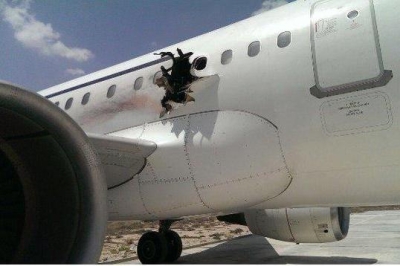March 24, 2017
On Tuesday, the Department of Homeland Security (DHS) issued new guidelines for the use of electronic devices on certain airlines and aircraft bound to the U.S. from eight majority-Muslim countries: “Electronic devices larger than a cell phone/smart phone will not be allowed to be carried onboard the aircraft in carry-on luggage or other accessible property. Electronic devices that exceed this size limit must be secured in checked luggage.”
The DHS release states that these new guidelines are necessary based on “evaluated intelligence” regarding the threat to commercial aviation from members of various terror organizations, who, according to media reports, might attempt to hide explosives in their laptop computers or tablets.
The DHS guidelines are limited to specific airlines and airports, which could indicate that U.S. officials are concerned about security measures in those specific airports, but it’s impossible to tell at this point without further information from DHS.
Airlines have long been a target of terror organizations, most notably Al-Qaeda, or more specifically, Al-Qaeda’s branch in Yemen (AQAP). In 2009, after visiting Yemen for training and guidance, Umar Farouk Abdul Mutallab boarded a flight from Amsterdam to Detroit with an explosive concealed in his underwear. Fortunately, the bomb failed to detonate completely.
In 2010, AQAP dropped off two explosive-laden printers at UPS and FedEx offices in Yemen. AQAP planned to send these printers to the US on a plane and blow them up over the East Coast. A tip from Saudi intelligence helped to detect these bombs before they could do any damage.
AQAP has also disseminated manuals to its followers with instructions on assembling an explosive that can pass through airport security undetected.
More recently, reports surfaced in 2014 that Al-Qaeda in Syria, with help from AQAP, was working on new, nonmetallic explosives that will be able to evade various airport security measures. Around that same time, new directives were issued that U.S.-bound passengers had to turn on their electronic devices to prove they are not filled with explosives.
Al-Qaeda targeted airlines once again in 2016 when al-Shabaab, Al-Qaeda’s branch in East Africa, was able to smuggle a laptop with an explosive onto a plane from Somalia bound for Djibouti. Luckily, the explosive detonated before the plane reached higher altitude, and the only casualty was the al-Shabaab operative, who was sucked out of the plane.
While it has been a primary culprit, Al-Qaeda is not the only terror organization to target commercial airplanes in the last few years. In October 2015, the Islamic State took down a flight from Egypt heading to Russia, killing 224 passengers and crew after a baggage handler who was loyal to the Islamic State was reportedly able to place the bomb on board the plane. Additionally, recent reports indicate the Islamic State is developing explosives that can be hidden within portable electronic devices.
It is safe to assume that terror organizations continue to work on innovative ways to target commercial airlines. If one of those attacks succeeded, it would be a major victory, significantly boosting the terror organization’s “prestige” in the Jihadi world — and advancing their propaganda efforts.










